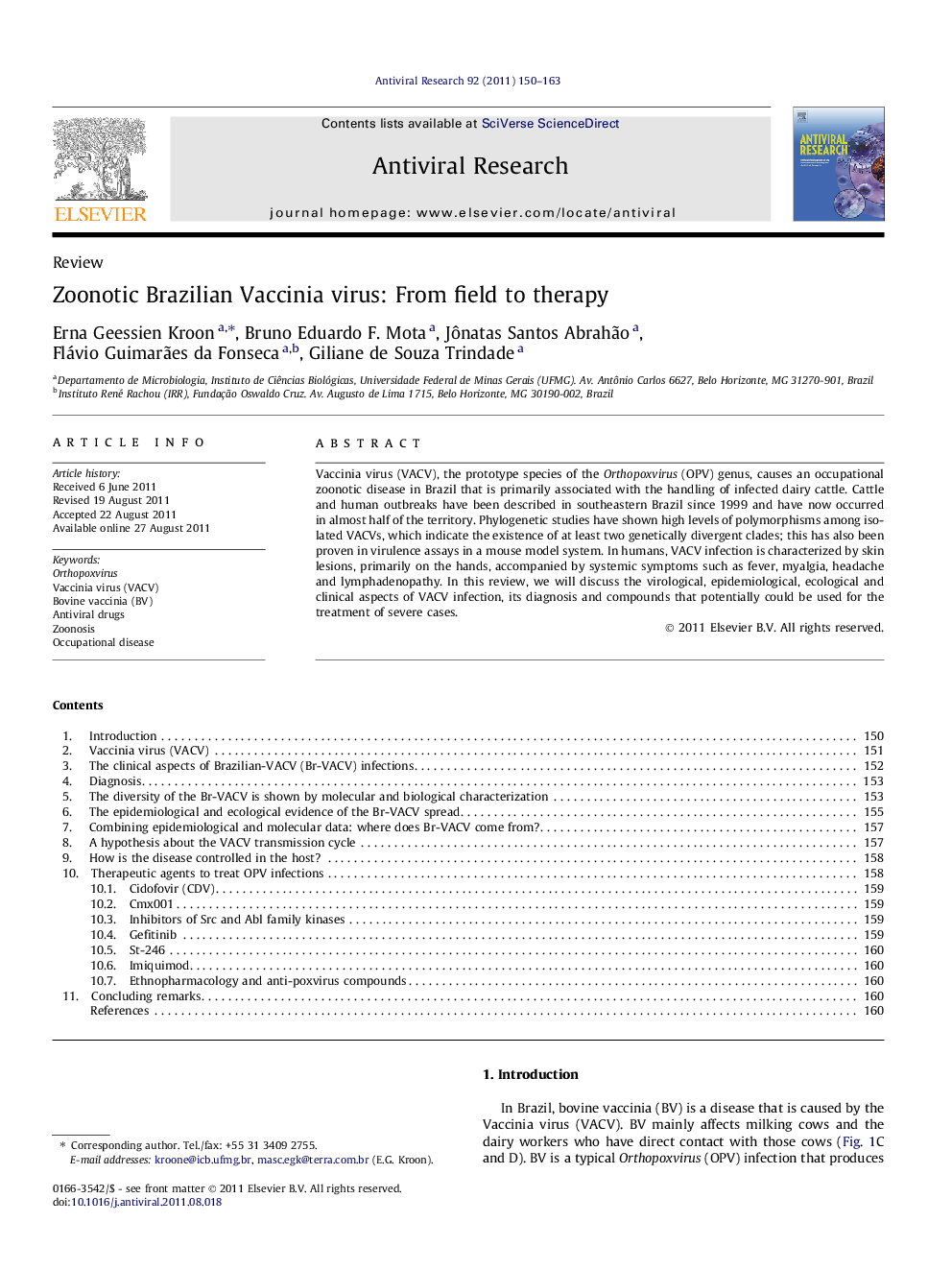| Article ID | Journal | Published Year | Pages | File Type |
|---|---|---|---|---|
| 2510211 | Antiviral Research | 2011 | 14 Pages |
Vaccinia virus (VACV), the prototype species of the Orthopoxvirus (OPV) genus, causes an occupational zoonotic disease in Brazil that is primarily associated with the handling of infected dairy cattle. Cattle and human outbreaks have been described in southeastern Brazil since 1999 and have now occurred in almost half of the territory. Phylogenetic studies have shown high levels of polymorphisms among isolated VACVs, which indicate the existence of at least two genetically divergent clades; this has also been proven in virulence assays in a mouse model system. In humans, VACV infection is characterized by skin lesions, primarily on the hands, accompanied by systemic symptoms such as fever, myalgia, headache and lymphadenopathy. In this review, we will discuss the virological, epidemiological, ecological and clinical aspects of VACV infection, its diagnosis and compounds that potentially could be used for the treatment of severe cases.
► Vaccinia virus, an orthopoxvirus, causes an occupational zoonotic disease in Brazil. ► Brazilian vaccinia virus constitute a risk to people and livestock. ► Brazilian vaccinia virus show genetic and phenotypic diversity forming at least two clades. ► Brazilian vaccinia virus were detected in wildlife and peri-domestic species. ► Co-infection and co-circulation of viruses was detected in bovine vaccinia.
